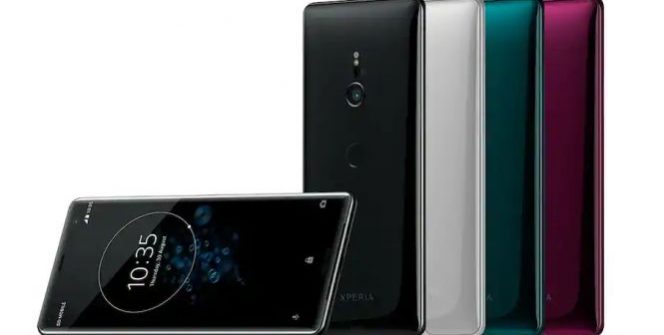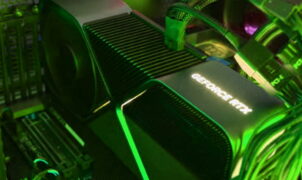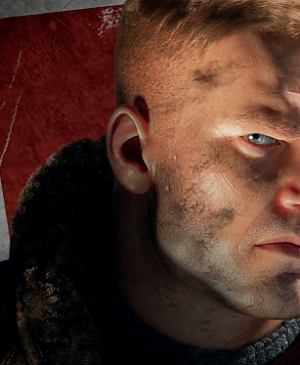TECH REVIEW – Let’s face it: Sony’ Xperia XZ2 had potential but was ultimately somewhat disappointing. That’s been the story for Sony’s Xperia line for a while, but there’s a lot to like about the £699 (inc. VAT; $899.99 in the US) Xperia XZ3, including Android 9 (Pie) and a superior 6-inch OLED screen. There are some oddities too, but Sony’s Xperia range is definitely moving in the right direction.
Sony’s new design for the Xperia XZ2 has taken another step forward, and we are now far from the unattractive, blocky appearance that — in my opinion, at least — was a drawback with earlier Xperia handsets. Here we have long edges that curve into the sides from both the front and the back, and rounded corners that are very much in line with today’s flagship smartphones.
Show me your four colours
The Xperia XZ3 is available in four colours: I was sent a silver handset, but black, green and red variants are also available.
The Xperia XZ3 is built around an aluminium frame for strength, with further solidity added by Gorilla Glass 5 at the front and back. The back is shiny and remarkably slippery in the fingers — I was never entirely sure the device wasn’t going to fall out of my hands. I mentioned in my review of the Xperia XZ2 that the fingerprint sensor was located a little awkwardly. That’s the case here too, with the scanner near the middle of the back rather than positioned towards the top. I found I had to bend a finger to access it, whereas with other phones the scanner’s position is more comfortable. I’d certainly get used to it, but it’s irritating at first.
The smooth back, coupled with the curved long back edges meant the handset was quite mobile on the arm-rest of my chair, falling to the floor a couple of times during testing when I wanted to prod the screen. On the plus side, Sony has managed to make a glass back that’s not a fingerprint magnet — a big improvement on the XZ2 and something Huawei couldn’t manage with its new Mate 20 Lite.
Resistance!
Sony has ticked the dust-and-water-resistance box, giving this handset an IP68 rating, which signifies that it’s ‘dust tight’ and can handle immersion in at least 1m of water for at least 30 minutes. However, those looking for a 3.5mm headset jack will be disappointed. There is a USB-C charge/headset connector on the bottom edge, but Sony doesn’t provide wired earphones, instead opting for a USB-to-3.5mm converter. That’s a neat way to cater to the needs of both USB-C audio converts and 3.5mm traditionalists.
All that aluminum and glass in a 6-inch handset means that the Xperia XZ3 is no lightweight, and its 193g is noticeable in a jacket pocket. In comparison, the 172g Huawei Mate 20 Lite is pretty lightweight for a 6.3-inch handset.
The Xperia XZ3‘s dimensions of 73mm wide by 158mm deep by 9.9mm thick are a little surprising too, considering that the 6.3-inch Huawei Mate 20 Lite (75.3mm x 158.3mm x 7.6mm) fits a taller screen into an almost identically tall body. Huawei’s handset is considerably thinner too, but at least the Xperia’s extra thickness means that the single rear camera lens sits flush to the chassis, whereas the dual lenses on the Mate 20 Lite protruded annoyingly.
Slick curves
The 6-inch screen curves downwards into the long edges of the chassis, in line with market-leading trends. Then again, it defies the current trend by lacking a notch for the front camera, and there’s a bit of bezel both at the top and bottom edges, so this isn’t an ‘all-screen’ frontage: the screen to body ratio just creeps over 80 per cent (80.5%).
This is the first time Sony has used an OLED display on a handset — and I wish it had done so earlier because the Xperia XZ3‘s 6-inch screen is a delight. The 18:9 aspect ratio and 2,880-by-1,440 resolution (537ppi) deliver extremely high image quality. Colours are superb, and the video watching experience is up there with the best I’ve seen.
There are colour gamut and white balance controls for those who want to fiddle with display settings, and Sony’s X-Reality can be switched on to enhance video quality. Smart backlight control is hardly an innovation, but it’s nice to see: this uses the front camera to determine whether the screen is being viewed and will override sleep settings.
Still, on a side note…
Sony has come up with a side-tapping enhancement called Side Sense that’s designed to help people get around the large screen and quickly access their most-used apps. A double tap on either side of the phone calls up what the phone thinks are a user’s favourite apps, or you can go into the settings area and predefine the selection to be shown. Once app shortcuts appear on-screen, they can be reached with a thumb, allowing for one-handed operation. A second function lets you sweep down the side of the screen to go back to the previous screen. The sensor can be enabled on both long sides or one, and you can fiddle with sensitivity to make sure your double taps and sweeps are recognized.
This sounds good in theory, but I found it erratic. My side taps were ignored more often than they were recognized, and in order to tap, I had to hold the handset with less grip, so its slippiness was even more apparent than usual. Then, on some occasions when I had not intended to side-tap, the handset decided that I had done so.
The ‘swipe to go back’ feature was also unreliable and had a tendency to push me back away from a web page I was reading to the previous page, just because I changed my grip on the phone. Thank goodness that feature can be separately disabled. In general, I’m not a fan. There are definitely opportunities to come up with good shorthand ways to get to favourite apps one-handed on large-screen phones, but Sony has created an irritation rather than a useful tool here.
Snap that dragon!
The Snapdragon 845 chipset with 4GB of RAM is the same as in the Xperia XZ2, and its performance is slightly improved with a Geekbench three-pass average score of 8630 this time compared to 8508 with the earlier handset. The gains may be partly down to the fact that the Xperia XZ3 runs on Android 9 (Pie) fresh out of the box.
The handset comes with 64GB of internal storage. Android, Sony’s own extras and a range of add-on apps reduce this by 15.86GB, leaving 48.14GB free. This can be augmented via a MicroSD card, which shares a caddy with the Nano-SIM. The caddy felt a bit flimsy to me, and I wouldn’t want to be swapping cards out too often.
There are a lot of extra apps, although to its credit Sony offers the option to select only those that are wanted during setup and to uninstall them at a later date. So while this is a handset with plenty of bloatware on offer, you do have control over it.
Sounds OK…
Sound quality is OK but not too great. It’s a bit heavy on treble, low on bass, and a somewhat distorted at top volume. The Dynamic Vibration System I disliked so much on the Xperia XZ2 is back, and as irritating as it was last time around. The handset shakes to the beat as music plays, or while video content is being watched, or apparently randomly as a game is underway — it’ll kick in any time there’s sound in fact. It can be controlled via a slider that pops up on-screen when the volume rocker is used, or it can be turned off permanently in settings. There are other sound calibrations to be fiddled with in settings, including ClearAudio+ and DSEE HX, which improves the quality of compressed audio.
Say cheese!
The single-lens (f/2.0) 19MP the main camera shoots nice images, and the 13MP front camera does a good job with selfies. My sample shots were crisp and bright, and the camera software itself is easy to get to grips with. There’s an AR Effect mode that inserts objects (such as pixies and dinosaurs) onto rear camera photos and ‘items’ (such as fake noses and glasses) onto faces.
The 3,330mAh battery isn’t as large as some but had enough capacity to get me through a day, including when I used the GPS a bit and spent a fair amount of time streaming video and reading web pages. It’s not an outstanding performer, but it’s capable and should get many users through the day. The handset supports wireless (Qi) charging and if the provided charger is used, also supports fast charging (QuickCharge 3.0).
Conclusions
The Xperia XZ3 is a return to form for Sony, with the OLED screen a particular highlight. Shipping with Android 9 is a definite lure, too. However, the Side Sense edge control system is flawed, dynamic vibration seems rather gimmicky, and the single-lens rear camera seems a touch old-fashioned.
But for all its advantages, the Xperia XZ3 may suffer in the face of comparison from the OnePlus 6 — the bête noire of so many phone makers struggling to deliver a top-quality experience in the £450 to £700 price range.
-BadSector-
Xperia XZ3
Design - 9.2
Software - 7.8
Hardware - 8.5
Camera - 8.8
Accumulator - 6.5
Value for money - 7.5
8.1
EXCELLENT
The Xperia XZ3 is a return to form for Sony, with the OLED screen a particular highlight. Shipping with Android 9 is a definite lure, too. However, the Side Sense edge control system is flawed, dynamic vibration seems rather gimmicky, and the single-lens rear camera seems a touch old-fashioned. But for all its advantages, the Xperia XZ3 may suffer in the face of comparison from the OnePlus 6 -- the bête noire of so many phone makers struggling to deliver a top-quality experience in the £450 to £700 price range.
























Leave a Reply